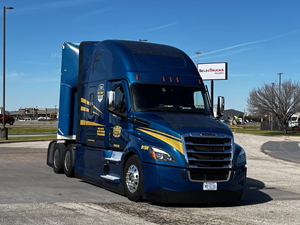
Since the advent of automobiles and trucks, which had the ability to achieve a speed fast enough to kill a bug, there has been an ongoing battle to protect the finish of the forward-facing surfaces of a vehicle. Stone chips, embedded bugs, and sand have challenged vehicle owners who care about the appearance of their vehicles for the better part of a century. I think it would be reasonable to say that chrome grilles and bumpers were an early attempt at minimizing the damaging effects of the various debris that impacted the front of any given vehicle.
After all, chrome has a higher threshold to the ongoing assault from all of the countless bugs that can etch the surface of the paint. Chrome also does not scratch as easily when scrubbing off all of the bugs that have been splattered on the surface while traveling down the highway.
When automobiles started to have color-matching flexible painted bumpers, the after-market responded by developing products such as the auto bra. The auto bra did a fine job of protecting the front of a vehicle from stone chips and splattered bugs. But when driving down the highway, it detracted from the overall styling of the vehicle that it was installed on. The downside to the auto bra was that if a stone or dirt was on the back side of it or it did not mount to the surface firmly, the chafing action of the wind upon it could cause damage to the surface of the vehicle.
The paint manufacturers also responded with tougher paints such as Dupont's Imron paint, while others developed films that would be overlayed on top of the painted surface. The early paint-protecting overlays were indeed a step in the right direction. However, they posed several other problems for people who were concerned about the appearance of their vehicles. Some of the problems with the vinyl overlays were that they would yellow and at times make the painted surface appear to be a slightly different shade of color than the rest of the vehicle's surface.
So, let's step up to today and talk about what is available for the discerning vehicle owner today to protect the surface of their vehicle from the damaging effects of the sun, stones, sand, and bugs. I was asked to test out the XPEL Paint Protection Film. XPEL is the first self-healing coating to protect the surfaces of our vehicles. The self-healing part is important because on many plastic films, if a stone chips the film it allows, in many cases, for moisture and other contaminants to work their way under the protective coating.
One of the first areas that I saw this happen was on the 1973 through early 80's General Motors pickups. There was a slight flare to the forward section of the rear wheel well which would constantly be bombarded with small cinders and stones kicked up from the tire on the steer axle. Anyone who lived in the rust belt understands how quickly this action destroyed the rear quarter panels of their vehicles. Later models of this pickup truck came from the factory with a protective film over this area which greatly helped minimize the damaging effects to this area of this particular vehicle. The downside was that in most vehicles, you could see this protective film which, to a certain degree, took away from the overall appearance.
What I am pleased to say about the XPEL product offering is that typically, I forget that it is even on the vehicle. When they installed it, they did the front bumper and also protected the lenses of our Cascadia's LED headlights. After 120,000 miles you still cannot tell the XPEL protective film was installed on the front of the Cascadia. The XPEL product also seems to make it easier to clean bugs off of the front bumper, which has me thinking it might be a good idea to do the roof cap of the Cascadia as well. We all know there are a lot of bugs that impact the area of the roof, from the identification lamps to almost two-thirds of the way to the top of the roof. The bugs on the rooftop are particularly bad because it is harder to clean them off and the sun tends to bake them on, and if not cleaned regularly, etch the painted surface. This would be a great area to install the XPEL product, especially when makes it easier to clean this area as well. A real testament to the quality of the XPEL protective film is that after 120,000 miles of abuse and regular high-pressure commercial truck washes, its appearance has not changed at all since it was installed. There is no yellowing, no flaking, cracking, or chipping. And best of all, you can’t even tell it’s there.